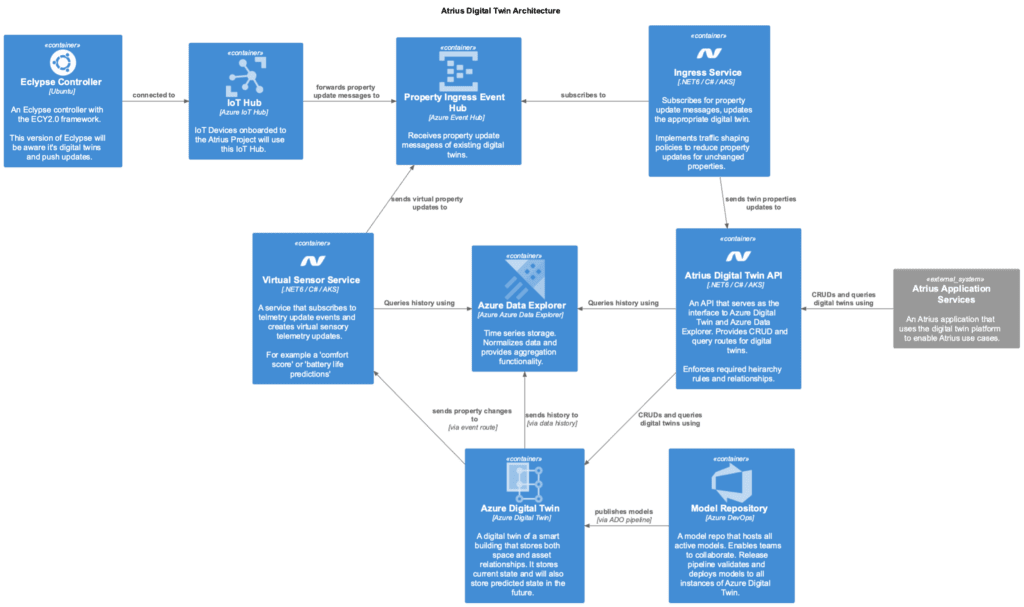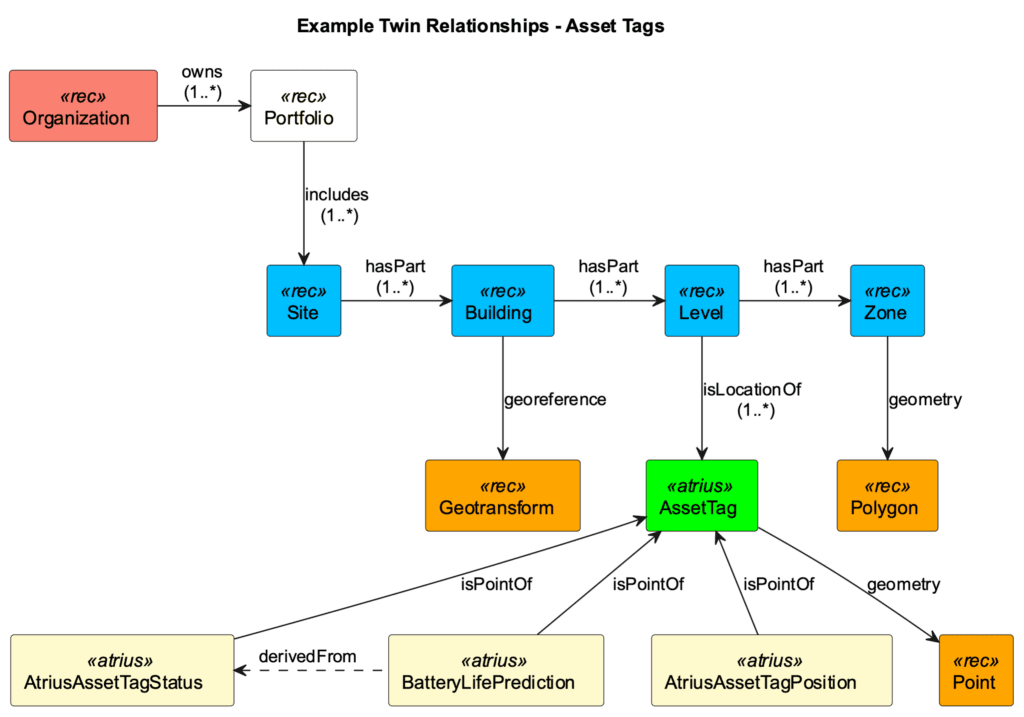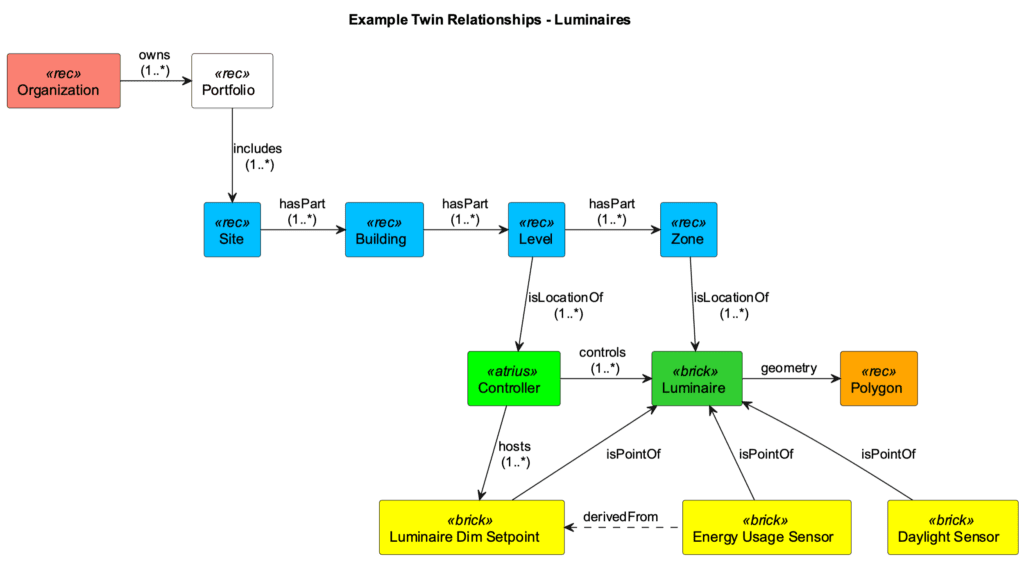At Atrius, we’re building a digital twin platform that enables applications to have access to a coherent data solution that is expandable to solve many intelligent spaces use cases. The Atrius digital twin platform uses Azure systems and an event-driven architecture to achieve this goal.
The Atrius digital twin platform has 3 main requirements:
- Capture the full life cycle of digital twins for IoT systems
- Drive a deeper understanding of spaces by deriving virtual sensors and predictions
- Consolidate on an extendable ontology
Representing Digital Twins
Digital twins are created in the platform through the Atrius Digital Twin API. This API implements additional requirements on top of Azure Digital Twin. The Atrius Digital Twin API enforces the ontology and requires a specific relationship. The Atrius Digital Twin API is the primary interface for application services to manage digital twins, perform relationship queries, and query digital twin history.
The digital twins and their relationships are stored in Azure Digital Twin. Azure Data Explorer serves as the historian. The ‘data history’ feature is used to seamlessly ensure all property updates are captured in the Azure Data Explorer.
Azure IoT Hub manages and maintains the connection to the Eclypse controllers that forwards property updates into an Azure Event Hub, we call the property ingress event hub. The ingress event hub will receive property updates from all future data connectors.

Virtual Sensors
The virtual sensor service generates new property updates by combining current and historical properties. For example, an asset tag reports battery voltage readings is captured in a status message. The battery voltage is first used to compute a current battery percentage and then the historical battery percentages are used to generate a prediction on the tag’s end of life. By itself, a single asset tag’s end-of-life prediction has some value, but when combined into a collection: the collection’s end-of-life prediction can be used to make financial and planning decisions.

Luminaire dim level is another sensor reading that can be used to estimate energy usage for a luminaire, and further for a group of luminaires. A product designed to enable configurable dimming solutions is now reused to drive an energy and sustainability use case.

Ontology
For the base ontology Atrius has aligned to RealEstateCore. In REC 4.0, BrickSchema, has been adopted as the ontology for all equipment and point types.
Consolidating use cases to a common ontology provides further accelerations for application teams. Commissioning is a time-consuming effort, applications that share a common ontology can share the commissioning burden. A luminaire dimming application can share the same site and building information as an indoor positioning solution.
RealEstateCore gives us a jump start in defining a space, but it doesn’t attempt to cover all use cases. Azure Digital Twin utilizes Digital Twin Definition Language (DTDL) to document the schemas. DTDL provides a mechanism to extend models and produce an inheritance hierarchy to extend additional schemas. When it makes sense, Atrius contributes schemas back to RealEstateCore. For example, Geotransform and Geometry schemas were implemented in coordination with the RealEstateCore technical committee. Geotransform is a technique we’ve used for nearly a decade to align local coordinate systems with world coordinates.
Ontology extendibility is important to ensuring application teams are adding value rapidly and have a mechanism to document contributions to the domain. Schemas are managed in an Azure DevOps git repo where teams use pull requests to ensure alignment. A build pipeline validates schemas and determines the deployment strategy. A release pipeline ensures successful schema deployment to the multiple Azure Digital Twin environments.

Make Everything a Twin!
When we first began implementing the Atrius digital twin platform, I had an opinion that not everything would make sense to create a “digital twin” of; that it made sense to only represent physical objects. As we’ve built this platform, my opinion has changed because of the power of representing data in Digital Twin Definition Language (DTDL) and Azure Digital Twin. If you can represent a concept in the ontology, you benefit from the platform’s twin features. The moment the new concept’s model is released into the platform, applications immediately begin creating and querying and building new customer focused features. So, in my opinion: Make everything a twin!
Microsoft’s IoT Show
We’re premiering a few videos at Microsoft’s IoT Show. Each details how our Atrius Locator solution optimizes our innovative platform and includes product demos.

